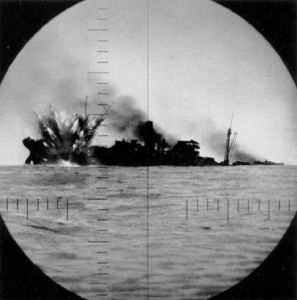 Have you ever wondered what it must have been like to serve aboard a World War 2 submarine? I have, and I simply cannot fathom the courage it took to volunteer to live (and possibly die) inside a steel tube, where, in terms of space, the crew is incidental to the miles of pipes and wires, and the electronics, engines, batteries, torpedoes, and machinery of all kinds.
Have you ever wondered what it must have been like to serve aboard a World War 2 submarine? I have, and I simply cannot fathom the courage it took to volunteer to live (and possibly die) inside a steel tube, where, in terms of space, the crew is incidental to the miles of pipes and wires, and the electronics, engines, batteries, torpedoes, and machinery of all kinds.
Life was cramped beyond description, and the air was invariably foul (diesel fuel and human stink, as water was too precious to use for showering and shaving), and everything was in a constant state of drippy or damp. Of course, all those things take a back seat to the unimaginable terror of sitting silently in virtual darkness while a surface ship drops depth charges, any one of which, has the potential to bring on instant death, or worse yet, damage to the ship, which would result in a slow, agonizing death.
A while ago, I took a tour of the USS Pampanito (SS-383) in San Francisco and saw firsthand the space, which housed and fed upwards of eighty men at a time.
Take a look at the webpage for the USS Pampanito, a World War 2 attack sub, and be sure to click on the virtual tour. While I suppose there is no substitute for actually touring the boat, I found the virtual tour to provide the advantage of allowing me to spend as much time as I wished marveling at the complexity of the equipment on the sub and considering the caliber of the men who served aboard her. (Note: You can also take the same virtual tour here, which may be easier to navigate.)
During World War 2, submarines comprised less than 2 percent of the U.S. Navy, but sank over 30 percent of Japan’s navy. The success of the submarine force did not come without a heavy price. Fifty-two subs were lost, along with more than 3,500 sub sailors. (Link)
These were very special men.










